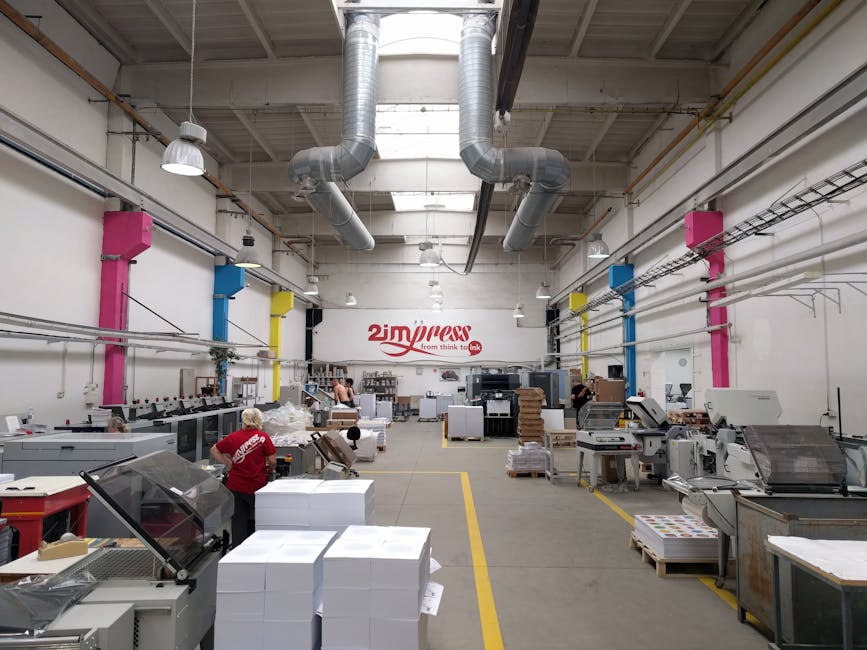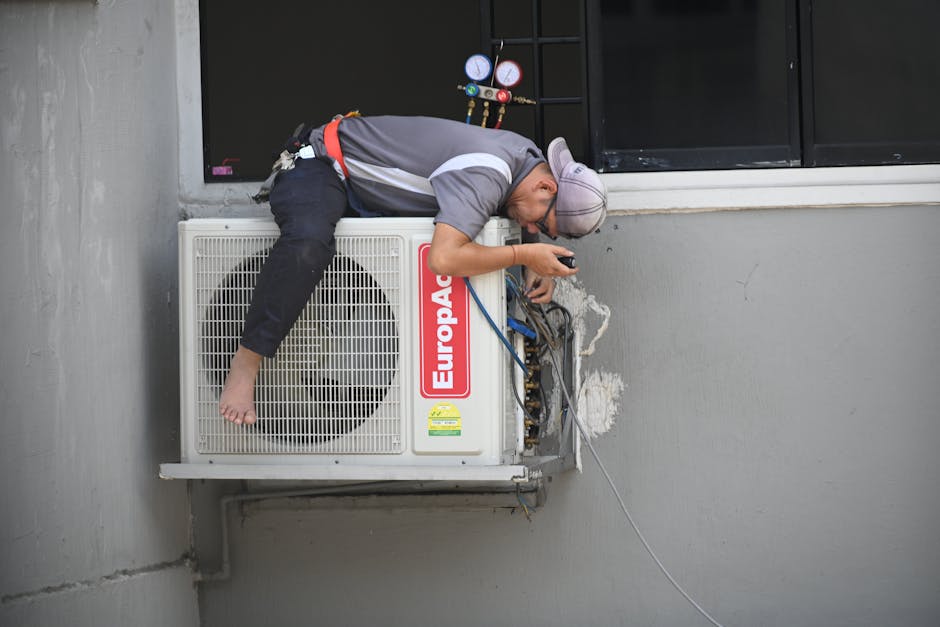Indoor Air Quality: Why It Matters for Workplace Health and Productivity
“Poor indoor air quality affects employee health, productivity, and overall workplace satisfaction. This comprehensive guide explores the importance of indoor air quality in workplaces, common pollutants, effective monitoring strategies, and practical solutions for creating healthier indoor environments that benefit both employees and organizations. ”

Indoor Air Quality: Why It Matters for Workplace Health and Productivity
In today's workplace environment, the quality of the air employees breathe has a profound impact on their health, comfort, and productivity. While organizations often focus on visible aspects of workplace design, indoor air quality (IAQ) remains a critical yet frequently overlooked component of a healthy work environment. This comprehensive guide explores why IAQ matters, how to identify common pollutants, and practical strategies for improving air quality in your workplace.
Understanding Indoor Air Quality and Its Importance
Indoor air quality refers to the condition of the air within enclosed spaces, particularly as it relates to the health and comfort of building occupants. The quality of indoor air inside offices, schools, and other workplaces is important not only for workers' comfort but also for their health and productivity.

Poor indoor air quality has been linked to numerous health issues, including:
- Headaches, fatigue, and trouble concentrating
- Irritation of the eyes, nose, throat, and lungs
- Aggravation of asthma and other respiratory conditions
- Long-term health effects when exposure to certain pollutants occurs over extended periods
According to research, improving indoor air quality can lead to significant productivity gains. Studies have shown that enhanced ventilation rates and reduced indoor pollutants can improve work performance by 8-11%, representing thousands of dollars in potential value per employee annually.
Common Indoor Air Pollutants in the Workplace
Understanding the sources of indoor air pollution is the first step toward creating healthier indoor environments. Most pollutants affecting indoor air quality come from sources inside buildings, although some originate outdoors.
Internal Sources of Pollutants
-
Building Materials and Furnishings
- New furniture, carpeting, and building materials can release volatile organic compounds (VOCs)
- Older buildings may contain asbestos in insulation or lead in paint
-
Combustion Sources
- Heating systems, especially those that are poorly maintained
- Tobacco smoke (in buildings where smoking is still permitted)
- Kitchen areas and cafeterias
-
Office Equipment
- Printers and copiers can release ozone, particulate matter, and VOCs
- Electronic devices may emit chemicals and generate heat
-
Cleaning Products
- Many conventional cleaning products contain harsh chemicals that can linger in the air
- Disinfectants, especially when overused, can contribute to poor air quality
-
Biological Contaminants
- Mold and mildew, especially in damp or poorly ventilated areas
- Bacteria and viruses that can spread through ventilation systems
- Dust mites and other allergens
External Sources of Pollutants
-
Outdoor Air Pollution
- Vehicle emissions from nearby roads
- Industrial emissions in urban areas
- Pollen and other natural allergens
-
Ventilation System Issues
- Inadequate outdoor air intake
- Poor filtration of incoming air
- Cross-contamination from exhaust vents

Health Impacts of Poor Indoor Air Quality
The health effects from indoor air pollutants may be experienced soon after exposure or, possibly, years later. While pollutants commonly found in indoor air can cause many harmful effects, there is considerable uncertainty about what concentrations or periods of exposure are necessary to produce specific health problems.
Short-Term Health Effects
- Irritation of the eyes, nose, and throat
- Headaches, dizziness, and fatigue
- Worsening of asthma symptoms
- Hypersensitivity and allergic reactions
- Respiratory infections
Long-Term Health Effects
- Respiratory diseases
- Heart disease
- Cancer (from certain pollutants like radon and asbestos)
- Neurological problems
- Compromised immune system function
The Business Case for Improving Indoor Air Quality
Beyond the obvious health benefits, there are compelling business reasons to invest in better indoor air quality:
1. Increased Productivity
Poor air quality can significantly impact cognitive function. A Harvard study found that participants in environments with improved ventilation and lower VOC levels scored 61% higher on cognitive function tests compared to those in conventional office environments.
2. Reduced Absenteeism
Healthier air means healthier employees. Organizations with better IAQ report fewer sick days and reduced instances of workplace-related illnesses.
3. Enhanced Employee Satisfaction and Retention
Employees increasingly value workplaces that prioritize their health and wellbeing. Better air quality contributes to overall workplace satisfaction and can be a factor in talent retention.
4. Compliance with Standards and Regulations
Meeting or exceeding accessibility standards and occupational health guidelines helps organizations avoid penalties and litigation while demonstrating commitment to employee welfare.
5. Energy Efficiency
Modern, well-designed ventilation systems not only improve air quality but can also reduce energy costs through efficient operation and heat recovery.
Strategies for Improving Indoor Air Quality
Implementing effective IAQ improvements requires a multi-faceted approach:
1. Source Control
The most effective way to improve indoor air quality is to eliminate individual sources of pollution or reduce their emissions. Some sources, like those containing asbestos, can be sealed or enclosed; others, like gas stoves, can be adjusted to decrease emissions.
2. Ventilation Improvements
Increasing the amount of outdoor air coming indoors can help reduce pollutants. This can be achieved through:
- Natural ventilation (opening windows when outdoor air quality permits)
- Mechanical ventilation systems with proper maintenance
- Local exhaust ventilation in areas with specific pollution sources
- Air distribution systems that ensure fresh air reaches all occupied spaces
3. Air Cleaning
Air cleaners can help reduce indoor air pollutants, but they cannot eliminate all pollutants and should be used alongside source control and ventilation. Consider:
- High-efficiency particulate air (HEPA) filters
- Activated carbon filters for gaseous pollutants
- Ultraviolet germicidal irradiation (UVGI) for biological contaminants
- Electronic air cleaners
4. Regular Maintenance
Preventive maintenance is crucial for maintaining good indoor air quality:
- Regular inspection and cleaning of HVAC systems
- Prompt repair of water leaks to prevent mold growth
- Scheduled replacement of air filters
- Cleaning of air ducts when necessary

Implementing an IAQ Management Plan
A comprehensive IAQ management plan helps organizations systematically address air quality issues:
1. Assessment and Monitoring
- Conduct baseline IAQ assessments
- Install air quality monitors in strategic locations
- Regularly test for common pollutants
- Survey employees about comfort and health concerns
2. Policy Development
- Create clear policies regarding smoking, use of fragrances, and cleaning products
- Establish protocols for addressing IAQ complaints
- Develop guidelines for renovations and new construction
- Implement green purchasing policies for materials and furnishings
3. Education and Communication
- Train facility managers on IAQ principles
- Educate employees about their role in maintaining good air quality
- Communicate regularly about IAQ initiatives and improvements
- Provide channels for reporting concerns
4. Continuous Improvement
- Review monitoring data regularly
- Update policies and procedures based on findings
- Stay informed about advances in IAQ technology and best practices
- Benchmark against industry standards
Leveraging Technology for Better Indoor Air Quality
Modern technology offers powerful tools for managing and improving indoor air quality:
1. Advanced Monitoring Systems
Real-time air quality monitoring systems can track multiple pollutants simultaneously and alert facility managers when levels exceed thresholds. These systems often integrate with building management systems for automated responses.
2. Smart HVAC Controls
Intelligent HVAC systems can adjust ventilation rates based on occupancy, CO2 levels, and other air quality parameters, optimizing both air quality and energy use.
3. Portable Air Purifiers
Strategic placement of high-quality air purifiers can address localized air quality issues, particularly in areas with higher occupancy or specific pollutant sources.
4. Data Analytics
Business intelligence and analytics platforms can help organizations analyze air quality data over time, identify patterns, and make data-driven decisions about IAQ improvements.
The Future of Indoor Air Quality Management
As workplace management continues to evolve, several trends are shaping the future of IAQ:
1. Integration with Smart Building Systems
IAQ monitoring and management are increasingly becoming part of comprehensive smart building platforms that optimize multiple aspects of the indoor environment.
2. Personalized Comfort Zones
Emerging technologies allow for the creation of personalized microenvironments where individual employees can adjust air flow, temperature, and filtration to their preferences.
3. Biophilic Design Integration
The integration of plants and natural elements not only improves aesthetics but can also contribute to better air quality through natural filtration.
4. Certification and Standards
More organizations are pursuing certifications like WELL Building Standard and LEED, which include comprehensive IAQ requirements.

Conclusion: Making Indoor Air Quality a Priority
In today's health-conscious workplace environment, indoor air quality has moved from a background consideration to a central component of workplace strategy. Organizations that prioritize IAQ not only protect the health of their employees but also position themselves to benefit from improved productivity, reduced absenteeism, and enhanced workplace satisfaction.
By implementing comprehensive IAQ management plans, leveraging modern technology, and staying informed about best practices, facility managers and HR professionals can create workplaces where employees can literally breathe easier—and perform better as a result.
Remember that improving indoor air quality is not a one-time project but an ongoing commitment to creating healthier, more productive workplaces. The investment in better air pays dividends in employee health, satisfaction, and organizational performance.
Additional Resources
For more information on improving indoor air quality in your workplace, consider these valuable resources:
- EPA's Indoor Air Quality Tools for Schools Program
- ASHRAE Standard 62.1: Ventilation for Acceptable Indoor Air Quality
- OSHA's Indoor Air Quality in Commercial and Institutional Buildings guidance
- WELL Building Standard v2 Air concept requirements
- Green Seal certification standards for cleaning products and services
By making indoor air quality a priority in your workplace management strategy, you're not just improving a building system—you're investing in the health, comfort, and productivity of your most valuable asset: your people.